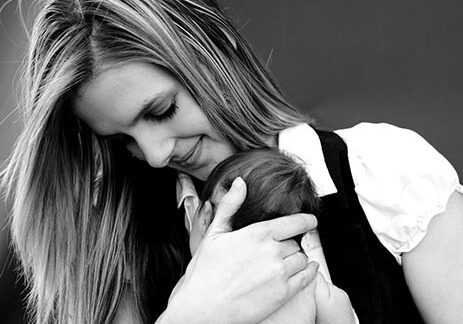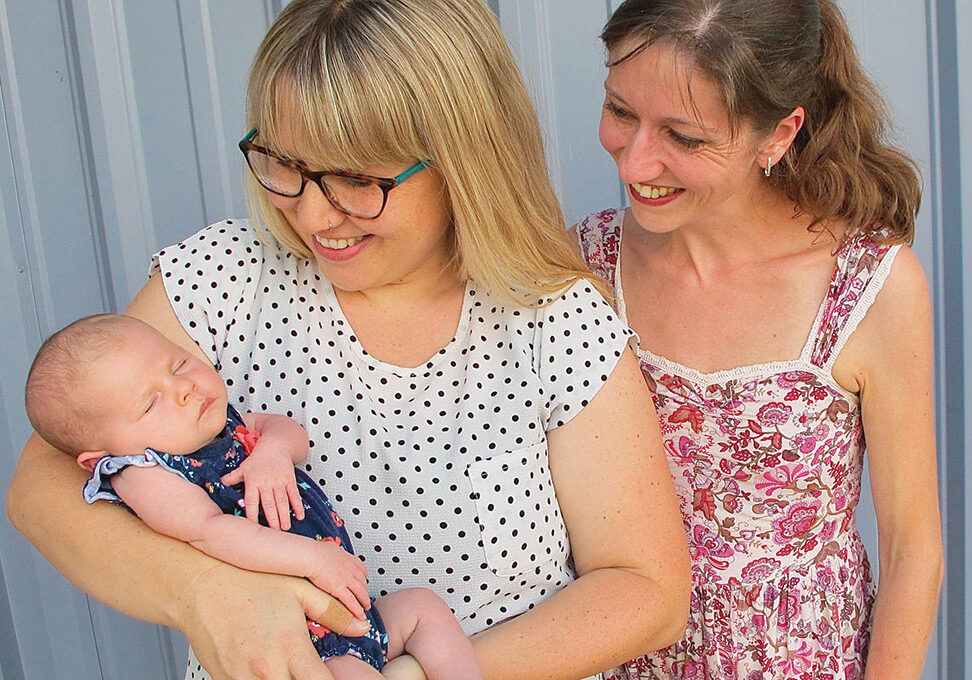A Birth Plan? Why?
The birth of a baby is one of the most exciting and important life events that a woman will have. Each birth is unique, just as each mother is unique. Families will have specific preferences they would like as part of their big day. Creating a birth plan is a great way to make sure the doctor, parents, extended family, and medical staff are on the same page.
Stacey Cook, a Registered Nurse at Saint Luke’s South Birth and Women’s Center in Overland Park, says, “A birth plan helps you feel prepared and gives you a sense of control. It also gives your doctor and nurses a clear picture of your wishes for the birth of your baby.”
To start your birth plan, ask yourself the following questions, and discuss them with your partner:
- Where do you want to deliver – in a hospital, a birthing center, or in your home?
- Is there something in your medical history that the nurses should be aware of, such as group B strep, Rh incompatibility, gestational diabetes, or drug allergies?
- Will you be breastfeeding or bottle-feeding? Would you like to incorporate skin-to-skin immediately after birth?
- How do you feel about the use of medication during labor? What other pain management techniques would you like to try? Shower, bath, exercise ball, music, focal points, massage, or different positions? Does the birthing facility offer these options?
- Do you want a delayed cord clamping if possible? Do you want to save the cord blood? Does your partner wish to cut the cord themselves?
- Who will be present? Just your partner? Will you have a doula? What about grandparents, friends, aunts, and uncles or older siblings?
- What preferences do you have for infant care? When to feed? Where to sleep? Will you offer a pacifier?
- Will baby receive standard medications and vaccines?
- If you need a cesarean section, do you have any preferences?
Once you have answered these questions, you have most likely determined what you would or would not like to have happen during your birthing experience. Armed with this information, you can start to create your birth plan.
Discuss With the Doctor
Talk with your doctor or midwife about what a typical birth looks like for her. They will be able to give you an idea of how things will go and what you can expect. If your plan differs greatly from the doctors’ plan, discuss this and come up with a plan that works for both of you. Having this discussion in advance can eliminate frustration during the birthing process.
Visit the Hospital
Most hospitals offer tours of their birthing facility. These often include spending time in an empty room to get acquainted with the space and help you decide on any other preferences you may want in your birth plan. Ask the hospital staff if pain management items such as exercise balls, jacuzzi tubs, or massage are available. Also, ask if the baby will stay in a nursery or in the room with you.
Start Early
It can take some time to get your birth plan together, so it is best to start on it early so you can feel confident it is ready when baby arrives. Even if this is not your first baby, you will still want to have a birth plan in place because you will have new nurses assisting with your delivery. Make sure your plan is easy to read and highlights the most important aspects that you wish for during the birth of your child.
With your plan in place, you will feel more prepared for the big day. Cook reminds, “The best tip to remember is that a birth plan is simply that. A plan. It’s important to realize that many things can go differently than you thought and you can change your mind on what you previously wanted. A safe and healthy mom and baby is the ultimate goal for you and your health care providers.”
What to Pack for the Hospital
- Pillow, blanket and other comfort items
- Nursing pillow, nursing pads, and nursing bra
- Clothes to wear home (choose some smaller maternity clothes or loose-fitting pants)
- Personal hygiene items
- Music, focal point and other pain management items
- Clothes for baby
- Gift for the older sibling(s)
- Camera, phone or other personal electronics, and chargers
- Journal or paper and pen in case you want to take notes
- Snacks and vending machine change for your partner
Posted in: Birth and Toddlers
Comment Policy: All viewpoints are welcome, but comments should remain relevant. Personal attacks, profanity, and aggressive behavior are not allowed. No spam, advertising, or promoting of products/services. Please, only use your real name and limit the amount of links submitted in your comment.
You Might Also Like...

The Clear Benefits of Cloth Diapers
This Earth Day, parents and parents-to-be may be considering one simple choice that can have a big impact in making the planet, and their children, healthier. That choice is the […]

Eight Benefits of Doula Support During Labor
Labor and delivery is a lot like free-fall parachuting. You can take classes to prepare. You may file a detailed plan for the (blessed) event. Still, jumping into the action […]

Postpartum Help Makes for Nurtured Families
Postpartum Help Makes for Nurtured Families Corey Engmann never considered hiring a postpartum doula until she learned she was expecting twins. Feeling overwhelmed and worried about how she would handle […]

Helping Moms On The Breastfeeding Journey
Debbie Pierce became a lactation consultant before most people knew what a lactation consultant was. After struggling to breastfeed her first baby, Debbie discovered a local branch of La Leche […]




Hi SARAH LYONS,
Thanks for your insightful article. I find this helpful. We are in the process of planning a family. I’m so grateful for how far we have come in understanding and treating infertility. If you had more insight, I would much appreciate it.